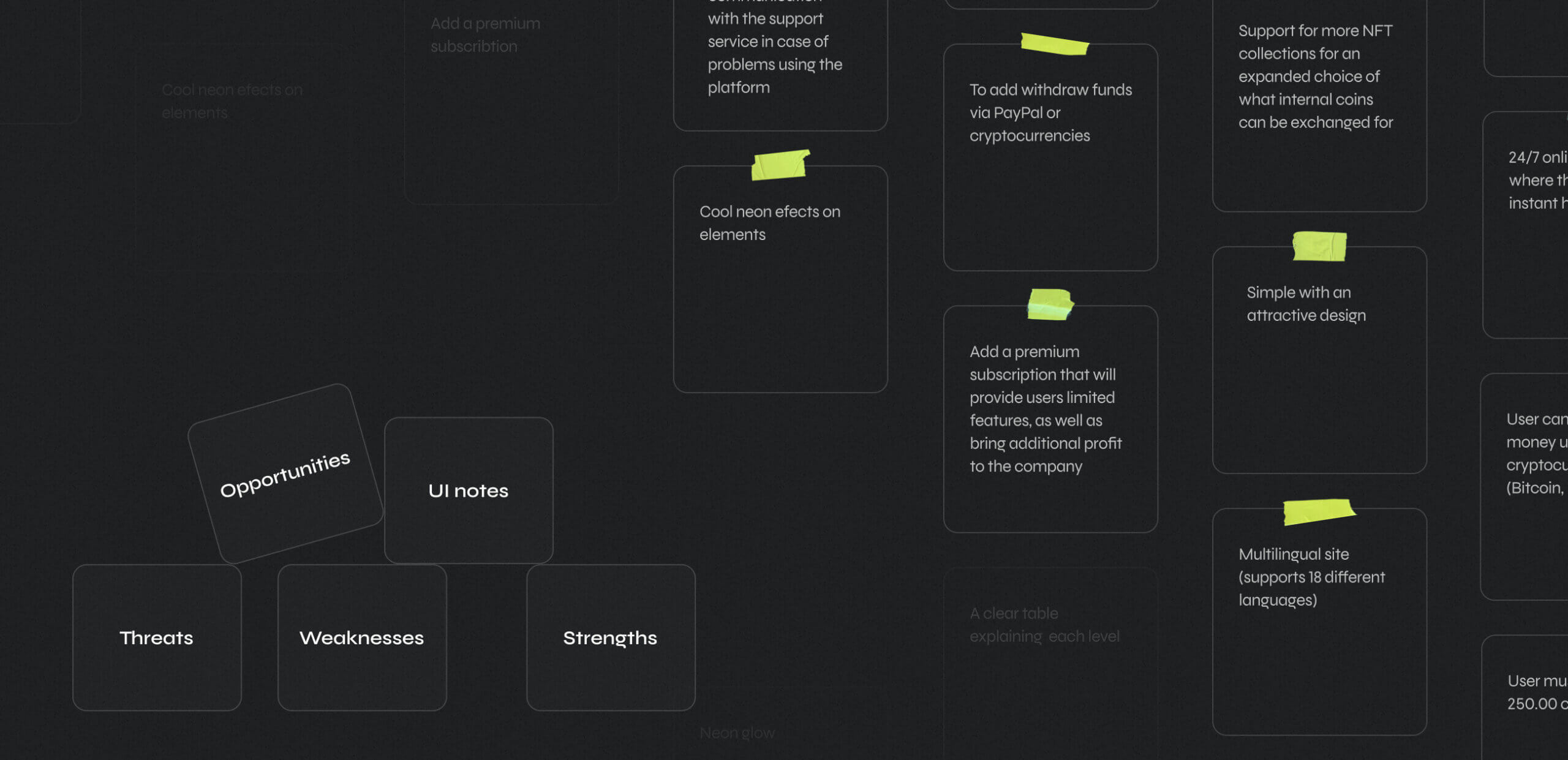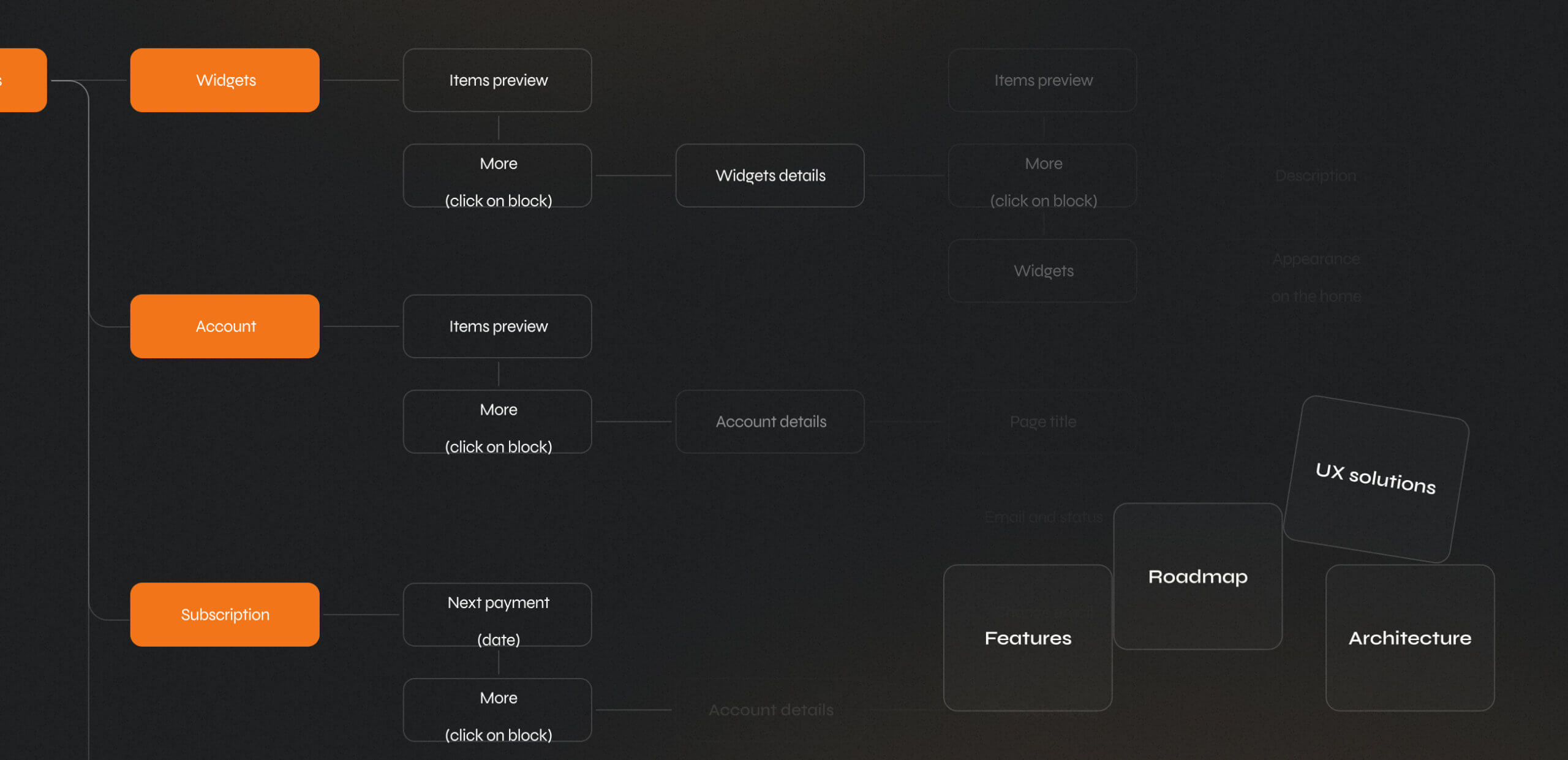What is included
in the Discovery
Phase?What is
included
in the
Discovery
Phase?
in the Discovery
Phase?
included
in the
Discovery
Phase?
We use our own cookies Learn more

We define current problems and their solutions, make recommendations and advice on solution implementation.
See exampleSWOT analysis is a competitor assessment method that identifies the main strengths, weaknesses, and key functions of both direct and indirect competitors. This process helps delve into the product and determine its further development strategy.
See exampleWhen launching a new product, we can identify the audience segments, their real pains and needs, as well as determine which of the CA segments the product will be focused on.
If the product has already been launched, we can consider the user experience and hypothesize about improving the product.
See exampleTo analyze the product more accurately, one of the methods we use is persona formation to understand the main needs and problems faced by the target audience of the product. To form personas, we use user interviews, categorize them and synthesize the main personas from real user data.
See exampleThis process involves consumers attempting to transition from their current life situation to a more desirable one. However, they encounter constraints preventing this transformation. Always centered around personas and their pain points.
See example
The list of features is a general list of all the functionality of the product. It is the final stage of all stages of research. It forms the basis of the future product.
See exampleNot all of the features in a project turn out to be as important as they seem at first glance. This step helps you stay focused and save the team’s time.
See exampleThe information architecture is a hierarchical visual diagram of the product that shows how the screens are interconnected and what functionality each of them has.
See exampleInteraction patterns are widespread solutions to common usability problems. They are ready-made UX solutions that can be adopted, modified, improved and used in any environment, as long as it solves the user’s problem.
In design, an interactive pattern is usually associated with some large-scale feature, but in fact even a small component can have its own interaction pattern.
See exampleAs a final delivery, you will get detailed technical requirements.
The discovery phase assists with organizing the development process properly and connecting your business goals with the demands of your users. This stage also helps make cost savings on design and development, as it means that fewer iterations are needed.
You can also check out all the next steps of the project at this link:
View our deck
The Discovery stage assists with organizing the design & development process properly and connecting your business goals with the demands of your users. This stage also helps save costs on design and development, as it means that fewer iterations are needed.
The main task of the Discovery Stage is to decide on the functionality of the product and identify its potential pitfalls. If your materials cover it, that’s great. We are very flexible and don’t offer you services you don’t need. We’ll take all your materials, scrutinize them, and recommend only the services you need.
No, this is an additional service. From our perspective it allows us to dive as deep as we can into your project. From your perspective it allows you to save some costs by discovering pitfalls and how to avoid them.
Business Analysis (analysis of the subject area, іdentification of current problems and their solutions, recommendations, and advice on solution implementation as well as a prioritized feature list), UX Research (which includes a target audience analysis, audit of the current product, competitor analysis, and implementation roadmap), Architecture assessment (this includes an app map)
During the Discovery phase of the project, a team of experts is involved. These include a Business Analyst who focuses on identifying requirements, prioritizing features, and creating user stories. Additionally, a UX/UI designer is responsible for conducting UX research and designing the informational architecture.


Phenomenon Studio Sagl
Register number: CH-501.4.028.340-3c/o
Via Giacomo Brentani 16, Lugano 6900, Switzerland

Tallin, Harju maakond, Kesklinna linnaosa, Kaupmehe tn 7-120

Phenomenon Studio sp. z o.o.
ul. Piłsudskiego 74/320, Wroclaw, 50-020

Kyiv, Konovaltsia Yevhena str. 32B
Phenomenon © 2024
Please reload the page and double-check that all information is entered correctly before submitting.
If you continue to experience issues, feel free to reach out to us directly for assistance. Thank you for your understanding.
